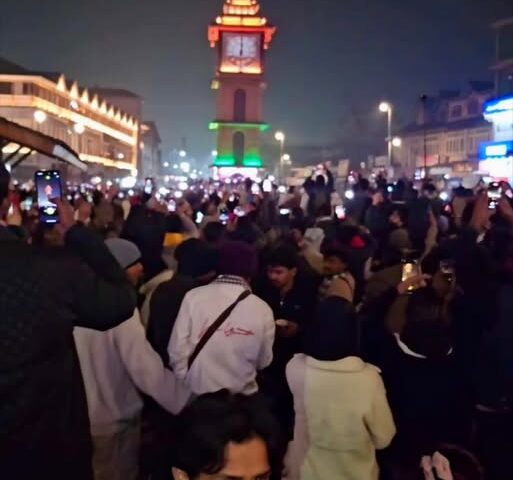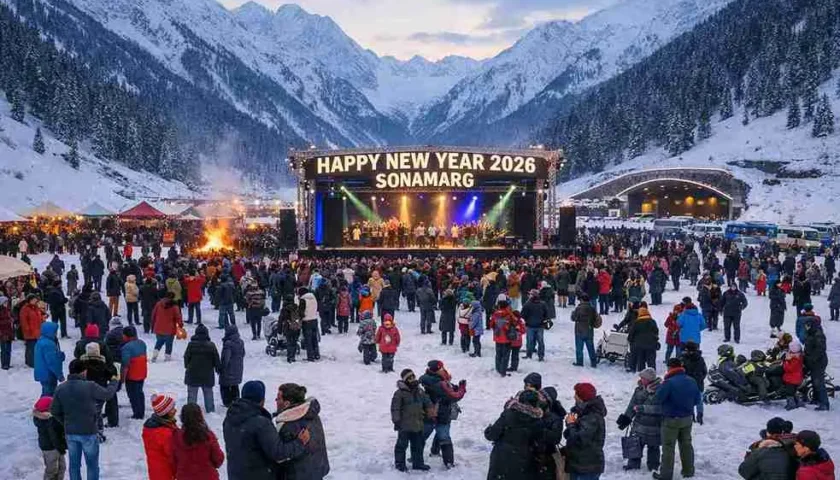Global Travel Leaders Eye Kashmir’s Comeback in 2025 and Beyond
A Valley of Promise Amid Adversity
Kashmir, often referred to as “Paradise on Earth”, is once again in the spotlight — not for its political troubles or the tragic attack in Pahalgam on April 22, but for a strong signal of revival and resilience.
Julia Simpson, President & CEO of the World Travel & Tourism Council (WTTC), has voiced strong optimism for the return of tourism in Kashmir. Despite the headwinds caused by recent events, Simpson remains bullish about the valley’s prospects, calling the tourism sector one of the “most resilient industries globally.”
“The world has seen conflicts, disruptions, and pandemics. Yet tourism always finds a way to rise,” said Simpson. “Kashmir’s recovery is not a question of ‘if’, but ‘when’ – and that ‘when’ is very soon.”
The Resilience of Global Tourism: Lessons from Around the World
Tourism is not a fragile industry — it’s one of the most adaptable. From the aftermath of 9/11 to the COVID-19 pandemic, the sector has shown remarkable endurance. According to Simpson, regional unrest does not permanently deter travelers if the destination offers unmatched beauty and hospitality — two things Kashmir is known for.
Comparative Global Case Studies:
-
Middle East: Despite long-standing geopolitical instability, Dubai and Saudi Arabia have continued attracting millions of tourists annually.
-
Europe: Paris and London bounced back swiftly after terror attacks, reinforcing the power of well-planned recovery and global goodwill.
-
Sri Lanka: Post-2019 Easter bombings, it took only 18 months for international tourist numbers to return to near-normal levels.
“If these destinations can bounce back, so can Kashmir,” said Simpson. “It’s all about rebuilding trust, confidence, and narrative.”
Kashmir Tourism: More Than Just a Destination, It’s an Emotion
Kashmir is not just a geographical marvel; it’s an experience that fuses snow-capped mountains, pine-covered valleys, Sufi shrines, floating markets, and the warmth of the Kashmiri people.
Key Experiences That Keep Drawing Tourists
-
Dal Lake Houseboat Stays: A romantic and surreal experience.
-
Gulmarg Ski Resorts: Among the best in South Asia for snow sports.
-
Pahalgam Treks & Lidder River Rafting: Adventure meets serenity.
-
Kashmiri Cuisine: The Wazwan is a sensory feast.
-
Cultural Encounters: From the Hazratbal shrine to the Mughal gardens.
Despite the April 22 attack in Pahalgam that shook public confidence, these enduring experiences remain intact — and with the right strategic actions, they can shine once again.
What’s Being Done to Reignite Kashmir’s Tourism Sector
Government-Led Action: From Symbolism to Strategy
Chief Minister Omar Abdullah has taken bold steps to lead from the front. Holding ministerial meetings in Pahalgam is not just administrative — it’s symbolic. It reassures locals, businesses, and visitors that Kashmir is open and safe.
WTTC & WTTCII: Signing MoUs for Long-Term Change
The WTTC and its Indian arm (WTTCII) signed a Memorandum of Understanding (MoU) to push for:
-
Sustainable tourism practices
-
Public-private partnerships
-
Skill development for locals
-
Resilience-building frameworks for the region
Central Government Backing
Both the Prime Minister and the Home Minister have assured full-scale support, promising:
-
Special financial packages for tourism entrepreneurs
-
Upgraded security infrastructure
-
Nationwide promotion campaigns for Kashmir
Industry Speaks: Faith, Fortitude & Forward-Thinking
Jyotsna Suri, CMD, The Lalit Suri Hospitality Group
“We’ve been in Kashmir for decades. We’ve survived insurgencies, political unrest, and natural disasters. We’ve always come back stronger.”
Suri’s group operates a luxury hotel in Srinagar and remains committed to operations, staffing, and future expansions. She’s not alone. Travel agents, tour operators, and hoteliers across India and beyond are holding on to Kashmir, waiting for the right time to amplify their efforts.
Kashmir Tourism Recovery Plan – In Action
Here’s how the revival blueprint is being rolled out:
1. Security Enhancements
-
Additional paramilitary deployments in tourist zones
-
Surveillance infrastructure: CCTV, drones, and emergency response cells
-
Tourist helplines with multilingual support
2. Brand & Marketing Campaigns
-
Taglines like “Come Discover Peace in Paradise”
-
Use of Instagram, YouTube influencers, and travel vloggers
-
Collaboration with OTT platforms for positive portrayals of Kashmir
3. Attractive Travel Packages
-
Airlines offering up to 35% off on Kashmir-bound flights
-
Hotels providing stay 3, pay 2 deals and off-season incentives
-
Tour agencies bundling Kashmir with Ladakh and Vaishno Devi circuits
4. Infrastructure Investments
-
Road widening projects connecting Srinagar, Gulmarg, and Sonamarg
-
New tourist medical response centers in high-altitude areas
-
Solar-powered rest stops and digital tourism kiosks
Positive Indicators: The Comeback Has Already Begun
Domestic Tourism Surge
States like Maharashtra, Gujarat, Punjab, and West Bengal are reporting increased inquiries for Kashmir. Honeymooners, families, and spiritual tourists are returning to Gulmarg and Pahalgam.
Revival in Hotel Bookings
-
A 22% month-on-month rise since April in Srinagar and Gulmarg.
-
Homestays in rural Kashmir seeing a surge as travelers seek offbeat experiences.
International Visitor Outlook
Simpson emphasized that with strategic storytelling and improved security, European and Southeast Asian tourists will resume visits by Q4 of 2025.
Challenges on the Road to Full Recovery
Despite the positive momentum, some hurdles remain:
Adventure Tourism Restrictions
-
Treks to Tulian Lake, Tarsar Marsar, and Kolahoi Glacier are currently suspended.
-
Rock climbing and river rafting tours in Pahalgam are under strict regulation.
-
This affects guides, porters, and rural economies that rely on eco-tourism.
Perception vs. Reality
-
Misinformation on social media platforms continues to stir fear.
-
Many travelers need constant reassurance from tour operators.
-
Foreign missions still have partial travel advisories in place for the region.
“Winning hearts is as important as securing borders,” remarked a senior official from J&K Tourism.
Strategic Outlook: What Lies Ahead for Kashmir Tourism
Key Pillars of the Roadmap
-
Digital Tourism Hubs in Srinagar for virtual storytelling
-
Skill training for local youth in hospitality, guiding, and sustainable tourism
-
Eco-tourism certification for resorts and tour operators
-
Community participation to ensure tourism benefits reach every household
2025–2035 Tourism Vision
The WTTC projects an average growth rate of 8.7% in Kashmir’s tourism over the next decade if initiatives stay on course.
Opportunities for Investors & Entrepreneurs
Kashmir isn’t just a tourist destination — it’s a goldmine for:
-
Boutique hotels in heritage structures
-
Luxury wellness retreats (Ayurveda + Kashmiri herbs)
-
Handicraft villages (Shawl weaving, papier-mâché art)
-
Organic farm stays and culinary experiences
Startups in eco-travel tech, local logistics, and travel insurance are also emerging in the region.
The Global Message: Why the World Should Revisit Kashmir
A Land of Peace, People & Potential
From snowboarding in Apharwat to sipping Kahwa in a floating houseboat, Kashmir holds the promise of unique experiences found nowhere else. The global community, particularly diaspora populations, have a role in reviving narratives around peace, beauty, and coexistence.
“Travel to Kashmir is not just leisure — it’s a statement of solidarity,” said Simpson. “Let us not let fear define a place of such deep beauty and culture.”
Final Thoughts: Hope on the Horizon
Kashmir stands at the cusp of resurgence. With strategic action, cross-sector collaboration, and unwavering belief, the valley will not just recover — it will redefine what responsible, resilient, and regenerative tourism looks like in South Asia.




